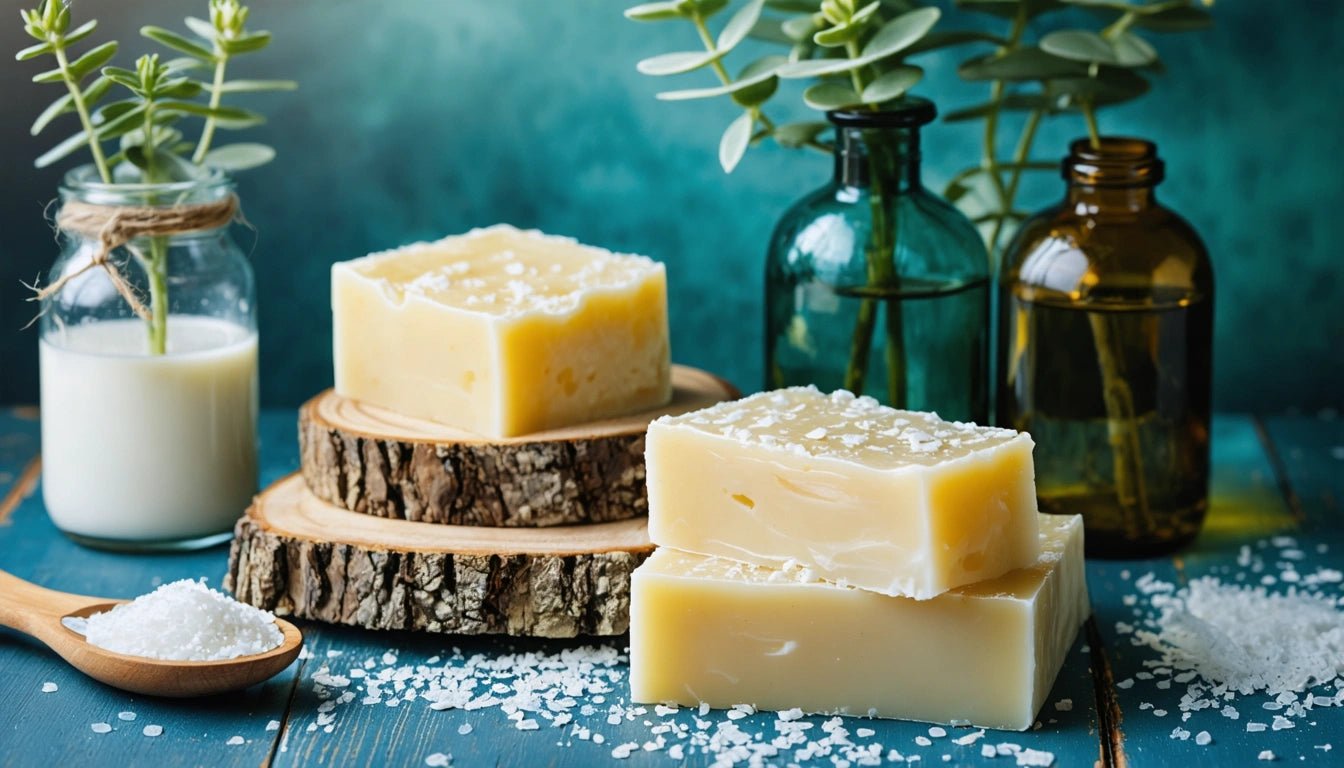Table of Contents
Crafting Goat Milk Soap: A Guide to Ingredients and Techniques
Creating homemade goat milk soap combines artistry with science, resulting in a luxurious product that nourishes your skin while expressing your creativity. Learning how to make soap with goat milk opens doors to customizable skincare options that commercial products rarely provide. This comprehensive guide walks you through selecting quality ingredients, understanding the unique properties of goat milk, and mastering techniques to create beautiful, skin-loving soap.
Benefits of Goat Milk Soap
Goat milk soap stands apart from regular soap due to its exceptional skin benefits. Rich in lactic acid, vitamins, and minerals, goat milk naturally exfoliates while moisturizing the skin. The cream content in goat milk adds a luxurious lather that cleanses without stripping natural oils.
According to this comprehensive soap making guide, goat milk contains alpha-hydroxy acids that help remove dead skin cells and promote cell renewal. Additionally, its pH level closely matches human skin, making it suitable for sensitive skin types and conditions like eczema or psoriasis.
Selecting the Best Goat Milk for Soap Making
When considering the best goat milk for soap, you have several options:
- Fresh goat milk: Provides the most benefits but requires careful handling
- Frozen goat milk: Convenient for soap making and helps prevent scorching
- Powdered goat milk: Offers long shelf life and consistency in recipes
- Canned goat milk: Accessible alternative when fresh milk isn't available
Fresh milk from Nigerian Dwarf or Nubian goats is often preferred for its higher butterfat content, creating a creamier soap. However, any goat milk will work well. If using fresh milk, freeze it in ice cube trays before soap making to prevent it from scorching when mixed with lye.
Essential Oils and Ingredients
Creating balanced soap requires understanding the properties of various oils. A typical goat milk soap recipe includes:
- Base oils (olive oil, coconut oil, palm oil)
- Specialty oils for added properties
- Goat milk (fresh, frozen, or powdered)
- Sodium hydroxide (lye)
- Essential oils for fragrance
- Natural colorants and additives
Many soap makers discover new techniques through specialized soap making communities and forums where artisans share their favorite tools and ingredients for creating unique soap varieties with distinctive properties.
Rice Bran Oil: A Versatile Addition
Understanding what is rice bran oil and its benefits can elevate your soap making. Extracted from the outer layer of rice, this oil contains vitamin E, antioxidants, and essential fatty acids. In soap making, rice bran oil contributes:
- Mild conditioning properties
- Stable, creamy lather
- Light feel without greasiness
- Extended shelf life due to natural antioxidants
Rice bran oil makes an excellent substitute for olive oil at 100% or can replace up to 20% of other oils in your recipe. Its balanced profile makes it suitable for all skin types.
Soap Making Techniques with Goat Milk
There are several methods for incorporating goat milk into your soap:
Cold Process Method
The most common technique for making goat milk soap is the cold process method. As detailed in this beginner's soap making guide, this approach involves:
- Freezing goat milk to prevent scorching
- Slowly adding lye to frozen milk
- Combining the milk-lye mixture with oils
- Reaching trace (pudding-like consistency)
- Adding fragrance, color, and additives
- Pouring into molds and insulating
Cold process soap requires 4-6 weeks of curing time to complete saponification and allow water to evaporate.
Hot Process Method
The hot process method speeds up saponification through external heat:
- Prepare milk-lye solution as with cold process
- Combine with oils and heat in a slow cooker
- Cook until the mixture goes through various stages (resembling applesauce, then petroleum jelly)
- Add fragrance and additives after cooking
- Pour into molds
Hot process soap can be used sooner (typically after 1-2 weeks) but may have a rustic appearance compared to cold process soap.
Troubleshooting Common Issues in Goat Milk Soap Making
When learning how to make soap with goat milk, you might encounter these challenges:
- Discoloration: Goat milk naturally caramelizes when mixed with lye, creating tan or brown soap. Keep temperatures low and use frozen milk to minimize this effect.
- Acceleration: Milk can speed up trace. Work at cooler temperatures and avoid fragrance oils known to accelerate trace.
- Scorching: Always use frozen milk and add lye very slowly while stirring constantly.
- Separation: If your soap separates in the mold, it can often be rebatched. Learn proper rebatching techniques in this guide on mastering DIY soap techniques.
Packaging and Curing Your Goat Milk Soap
Proper curing is essential for creating mild, long-lasting soap:
- Place freshly cut soap bars on drying racks
- Store in a cool, dry place with good air circulation
- Turn bars weekly to ensure even curing
- Test pH levels after curing to ensure mildness
For packaging, breathable materials like kraft paper or muslin bags work well. Avoid plastic wrap until the soap is fully cured, as it can cause sweating and deterioration.
Expanding Your Soap Making Journey
As you become comfortable with basic goat milk soap making, consider exploring advanced techniques:
- Layering and swirling for visual appeal
- Incorporating herbs and botanical elements
- Creating specialty formulations for different skin needs
- Experimenting with liquid goat milk soap, as outlined in this liquid soap making guide
Many soap makers also explore melt-and-pour techniques with goat milk bases. This approach, detailed in this melt-and-pour soap guide, offers a simpler entry point for beginners while still providing the benefits of goat milk.
Whether you're crafting soap for personal use or considering a small business venture, mastering how to make soap with goat milk creates opportunities for creativity, self-expression, and providing genuinely beneficial skincare products.



















